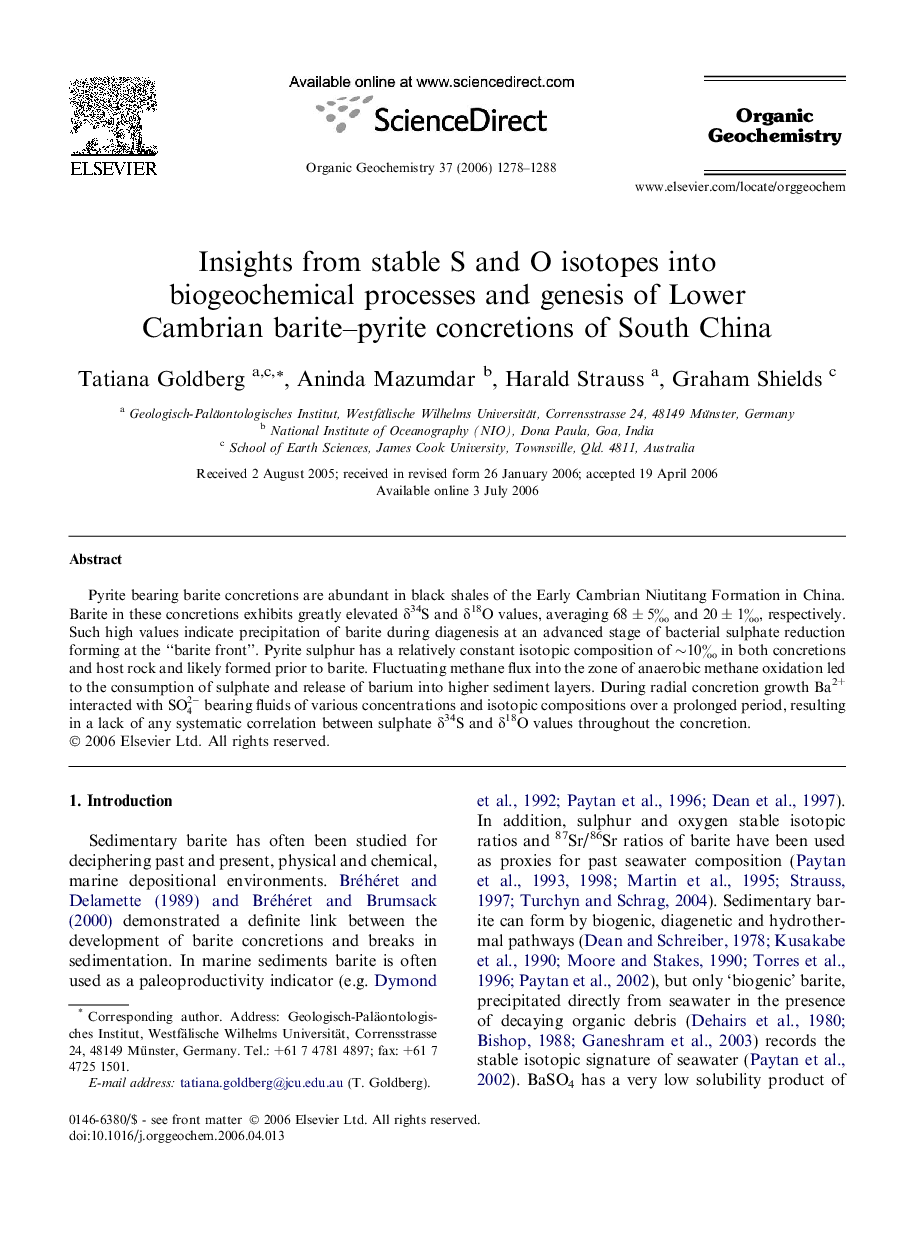| Article ID | Journal | Published Year | Pages | File Type |
|---|---|---|---|---|
| 5163707 | Organic Geochemistry | 2006 | 11 Pages |
Abstract
Pyrite bearing barite concretions are abundant in black shales of the Early Cambrian Niutitang Formation in China. Barite in these concretions exhibits greatly elevated δ34S and δ18O values, averaging 68 ± 5â° and 20 ± 1â°, respectively. Such high values indicate precipitation of barite during diagenesis at an advanced stage of bacterial sulphate reduction forming at the “barite front”. Pyrite sulphur has a relatively constant isotopic composition of â¼10â° in both concretions and host rock and likely formed prior to barite. Fluctuating methane flux into the zone of anaerobic methane oxidation led to the consumption of sulphate and release of barium into higher sediment layers. During radial concretion growth Ba2+ interacted with SO42- bearing fluids of various concentrations and isotopic compositions over a prolonged period, resulting in a lack of any systematic correlation between sulphate δ34S and δ18O values throughout the concretion.
Related Topics
Physical Sciences and Engineering
Chemistry
Organic Chemistry
Authors
Tatiana Goldberg, Aninda Mazumdar, Harald Strauss, Graham Shields,
